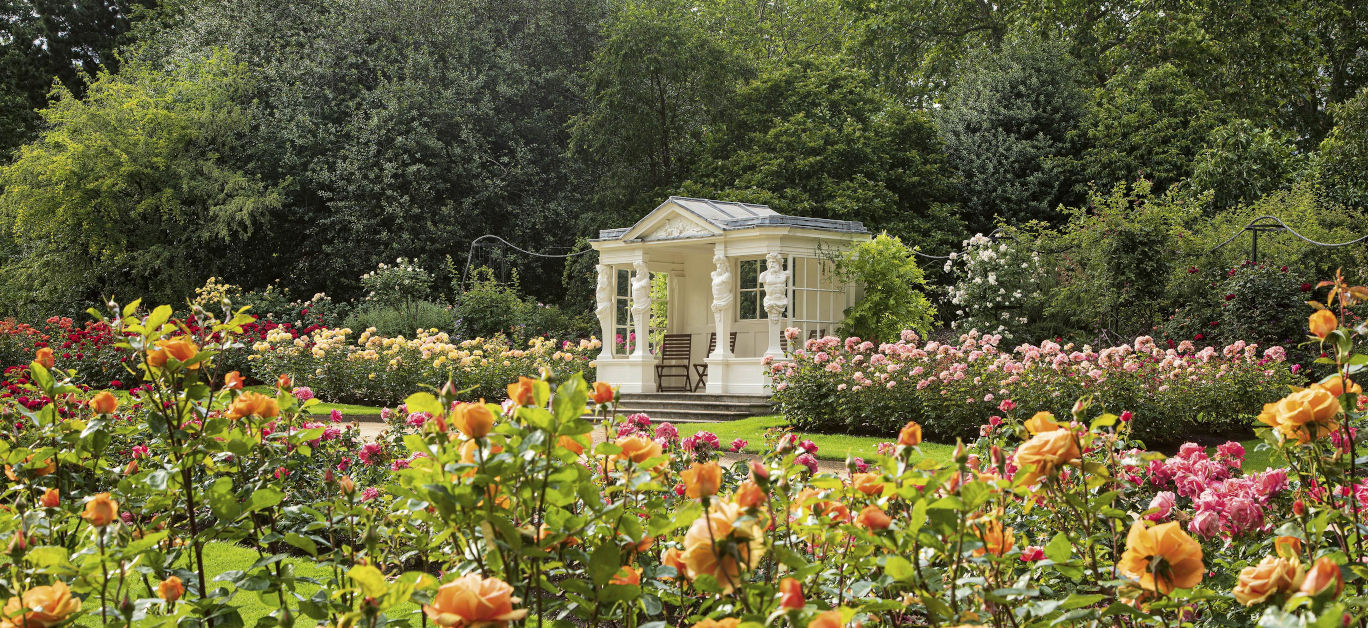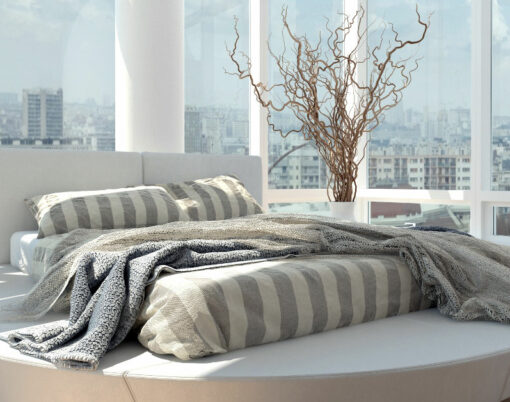The garden at Buckingham Palace is an oasis in the centre of London. Following the pathways past the lake and through the woodlands beneath the mature sentinel trees is tantamount to time travel, an escape into another dimension. A new book, Buckingham Palace A Royal Garden, documents a year in the historic garden. It offers a rare glimpse into the garden’s past and its life as part of a working royal palace, including a peek at the royal bee hives.
Rather than a gardening manual, author Claire Masset aims to encapsulate the character of the royal garden, laid out in an attractive magazine style. In addition to stunning new photography by John Campbell, the compact text is interspersed with old black and white photographs and paintings. Occasional fact boxes reveal historic anecdotes such as Queen Charlotte’s transformation of the vegetable patch into a ‘zoo’ in 1762 featuring a zebra and an elephant.
Tucked away behind the East Wing façade, the iconic setting for royal weddings, coronations and national events such as VE Day, the Palace garden is a remarkable 39-acres of wild and unspoilt landscape consisting of meadows, lawns, arboretum, a rose garden and a lake.
Urban biodiversity
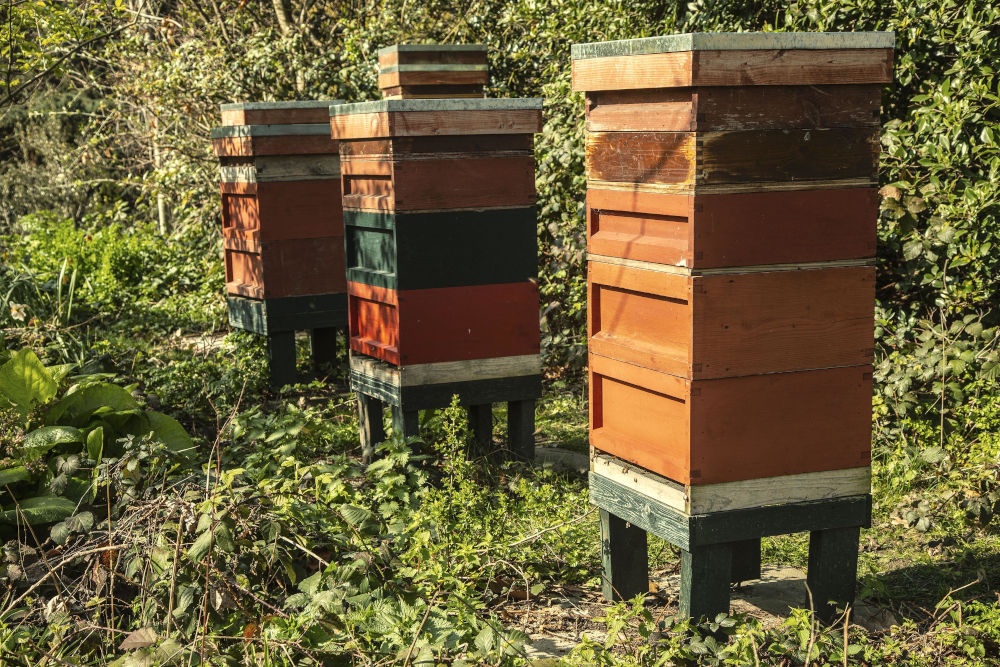
The five acres of meadows are home to over 320 different wildflowers and grasses and are a haven for insects, from bees to beetles and butterflies to grasshoppers. The garden’s sustainability credentials include the aforementioned beehives located on the island in the lake. The five hives produce 160 jars of honey a year for use in the palace kitchens. It is reassuring to imagine Her Majesty breakfasting on toast and honey.
Further culinary details involve botanicals such as lemon verbena, hawthorn berries, bay leaves and mulberry leaves used to infuse Royal Collection Trust’s ‘Buckingham Palace Gin’. The mulberries trees are harvested in summer and the berries baked into desserts of apple and mulberry crumble and mulberry soufflé.
In addition to seasonal landscapes, worth mentioning are Campbell’s deceptively simple studies of the trunk of an old Chinese chestnut (Castanea mollissima), fungi growing on bark, piles of logs and decaying wood located around the garden as shelter for small creatures. Equally beautiful are the colourful bulbs and blooms of spring and summer and the evergreen leaves and bright berries in the colder months. The atmospheric images of snow and frost depict the royal garden’s extraordinary beauty in an English winter.
The Mulberry Dell
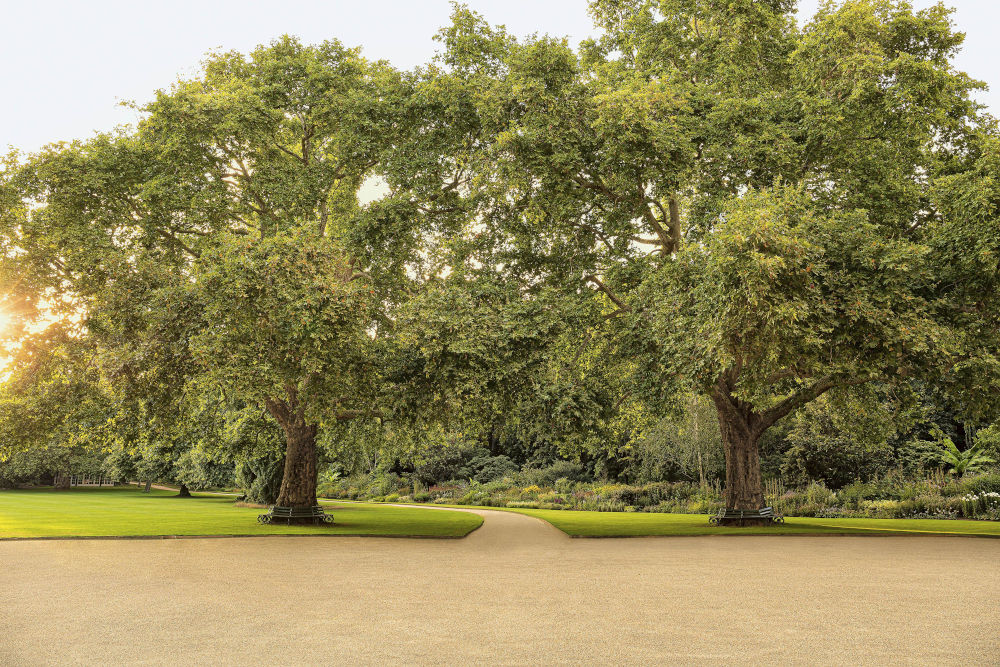
Home to a National Collection of mulberries with 40 different types of tree, the garden boasts a vast arboretum of 1,000 trees with an incredible 85 different species of oak, as well as white willow, hawthorn, alder, ash, beech and silver birch. Out of 98 plane trees well-suited to urban environments are two trees introduced by Queen Victoria and Prince Albert and known affectionately as ‘Victoria and Albert’.
A double-page photographic spread of tree flowers, magnolias and camellias in varying shades of pink, are particularly striking. Images of seasonal berries, blooms and bulbs fill the 120 pages and Masset reveals that the gardeners make up a posy of cut flowers for The Queen every week when Her Majesty is in residence.
Rose Garden
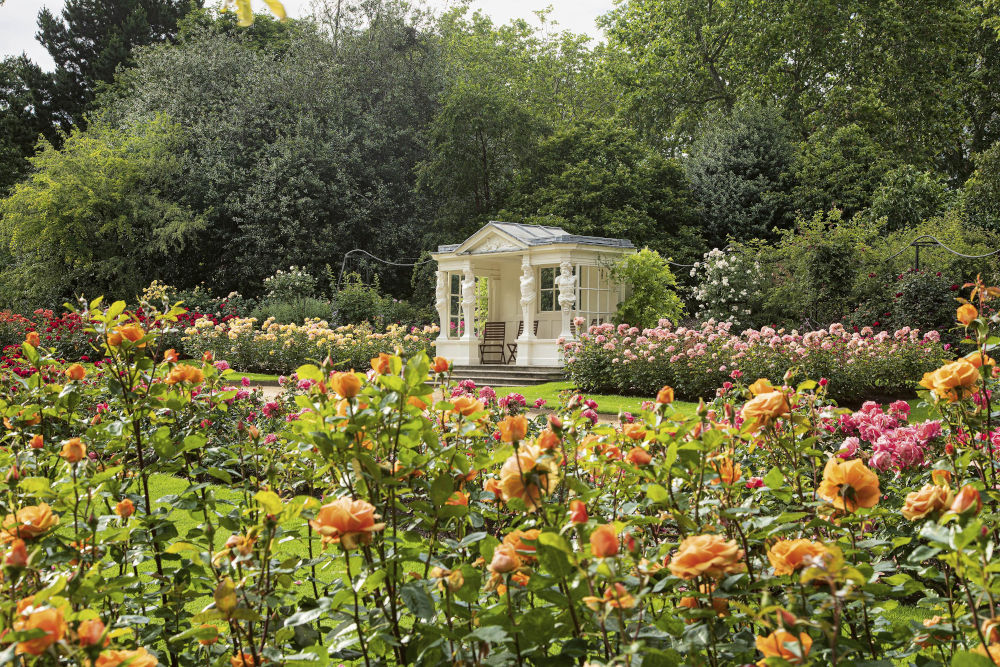
Featuring 25 formal beds, the Rose Garden was created in the 1960s in the Victorian style. The omission of the rich red ‘Royal William’ created to mark Prince William’s birth in 1982, is compensated by photographs of an almost wickedly crimson ‘Rob Roy’, and the most perfect ‘Tickled Pink’.
In the same way that many of us furnish our gardens with a bird box, a pergola or even a garden gnome or two, the Rose Garden is the location for the impressive marble Waterloo Vase. Commissioned by Napoleon prior to his Russian campaign in 1812, the vase remained unfinished due to his defeat in 1820. King George IV commissioned Richard Westmacott to finish the sculpture in 1820. A photograph taken in 1939 by Cecil Beaton of Queen Elizabeth, later the Queen Mother, wearing a romantic Norman Hartnell dress from the White Wardrobe collection in 1939, provides perspective by standing beside the 18-foot Vase.
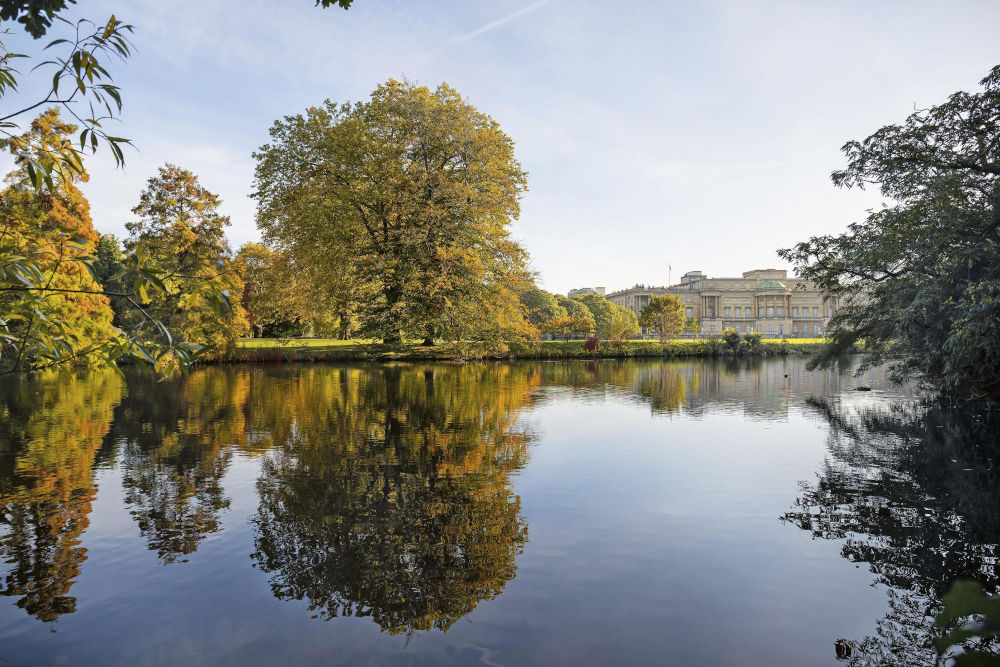
Buckingham Palace is so much more than an iconic building. Over the centuries it has been home to royal families and primarily a private London garden. In the 1950s a swing, sandpit and slide were installed near the North Terrace for Prince Charles and Princess Anne. Queen Victoria and Prince Albert also loved the great outdoors and in winter, they enjoyed skating parties and sledging in the frosty, snowy landscape. ‘After luncheon went again to see the children sledging in the garden. It is a delightful thing and these real winter amusements and real winter weather are most enjoyable,’ Victoria recorded in her journal on 16th February 1853.
The Palace garden also plays a part in a busy calendar of royal events. A garden of this size requires a huge amount of work year-round to maintain high standards under the guardianship of Mark Lane, head gardener. Gardening tips in the four ‘Seasonal Activities’ sections include cutting and clipping the lawn. Those obsessed with their own patch of grass will appreciate the remedial care required to maintain the lawn, particularly after the pounding it takes from thousands of guests at the Queen’s Garden Parties invited from all walks of life.
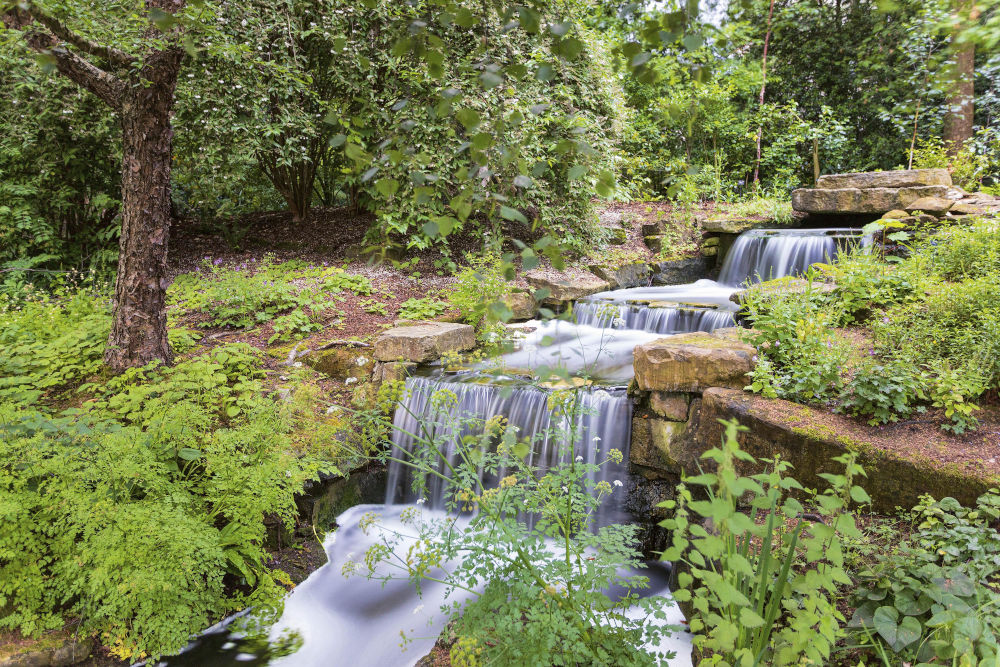
This remarkable London garden is a very special place and an inspiration to gardeners and non gardeners alike. Buckingham Palace Royal Garden is a charming and inspirational coffee table book to peruse over again for hours of quiet contemplation and pleasure. It is a book to curl up on the sofa with on a rainy afternoon.
Factbox
Buckingham Palace: A Royal Garden by Claire Masset published by The Royal Collection Trust will be available from 13 April 2021. Available at £14.95 from Royal Collection Trust shops and at £16.95 from all good bookshops.
Claire Masset is former Gardens Editor of The English Garden magazine and author of Cottage Gardens, Roses and Rose Gardens and Secret Garden.
John Campbell is an award-winning photographer of gardens and natural landscapes.
Picture credits. Unless otherwise stated, all works reproduced are Royal Collection Trust / © Her Majesty Queen Elizabeth II 2021.
Twitter: @RCT
Instagram: @royalcollectiontrust
Facebook: @royalcollectiontrust












